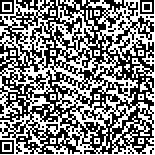| 引用本文: | 章奇,居琪,李健欣,曹驰程,江和龙,张晖.针铁矿对湖泊草、藻来源可溶有机质的非均质吸附.湖泊科学,2020,32(4):1041-1049. DOI:10.18307/2020.0413 |
| ZHANG Qi,JU Qi,LI Jianxin,CAO Chicheng,JIANG Helong,ZHANG Hui.Heterogeneous adsorption of macrophyte- and algae-derived dissolved organic matter on goethite in freshwater lakes. J. Lake Sci.2020,32(4):1041-1049. DOI:10.18307/2020.0413 |
|
| 本文已被:浏览 4117次 下载 1855次 |

码上扫一扫! |
|
|
| 针铁矿对湖泊草、藻来源可溶有机质的非均质吸附 |
|
章奇1, 居琪1, 李健欣2, 曹驰程1, 江和龙3, 张晖1
|
|
1.东南大学公共卫生学院, 环境科学工程教育部重点实验室, 南京 210009;2.南京林业大学生物与环境学院, 江苏省环境工程重点实验室, 南京 210037;3.中国科学院南京地理与湖泊研究所, 湖泊与环境国家重点实验室, 南京 210008
|
|
| 摘要: |
| 为探究富营养化湖泊中自生源可溶有机质(DOM)在泥水界面的吸附行为,以马来眼子菜(Potamogeton malaianus)和铜绿微囊藻(Microcystis aeruginosa)释放的DOM为代表,考察针铁矿对草、藻源DOM中不同组分的吸附特征.三维荧光平行因子分析表明类富里酸组分C1和类胡敏酸组分C4的含量很低,而类蛋白物质(类酪氨酸组分C2和类色氨酸组分C3)分别占草、藻源DOM荧光组成的70%和93%.2种DOM均可被针铁矿吸附,吸附过程符合伪一级动力学.通过等温线拟合发现针铁矿吸附藻源DOM的非线性更强,饱和吸附量(23.77 mg/g)高于草源DOM (19.10 mg/g).特别地,类蛋白组分呈现非线性吸附,而类腐殖物质的吸附近似线性,且针铁矿对于DOM各荧光组分的吸附量顺序为:C3 > C2 > C4 > C1,此非均质吸附特征与DOM组分的初始含量、分子大小、芳香性及有效吸附位点有关.红外光谱证实氨基、羧基和羟基是吸附过程中的重要官能团.因此,草、藻源DOM显著改变了针铁矿表面的有机物质组成,影响湖泊沉积物的生物地球化学行为. |
| 关键词: 可溶有机质 针铁矿 吸附 平行因子分析 马来眼子菜 铜绿微囊藻 |
| DOI:10.18307/2020.0413 |
| 分类号: |
| 基金项目:东南大学通识课程项目(1125000162)和中央高校教育教学改革专项资金项目(5225009110)联合资助. |
|
| Heterogeneous adsorption of macrophyte- and algae-derived dissolved organic matter on goethite in freshwater lakes |
|
ZHANG Qi1, JU Qi1, LI Jianxin2, CAO Chicheng1, JIANG Helong3, ZHANG Hui1
|
|
1.Key Laboratory of Environmental Medicine Engineering, Ministry of Education, School of Public Health, Southeast University, Nanjing 210009, P. R. China;2.Key Laboratory of Environmental Engineering of Jiangsu Province, College of Biology and the Environment, Nanjing Forestry University, Nanjing 210037, P. R. China;3.State Key Laboratory of Lake Science and Environment, Nanjing Institute of Geography and Limnology, Chinese Academy of Sciences, Nanjing 210008, P. R. China
|
| Abstract: |
| Adsorptive fractionation of macrophyte- and algae-derived dissolved organic matter (MDOM and ADOM) on goethite was investigated to demonstrate the transfer of autochthonous DOM at the water-sediment interface in eutrophic lakes. Excitation emission matrix spectra with parallel factor analysis showed that protein-like substances, including tyrosine- and tryptophan-like component (C2 and C3), accounted for 70% and 93% of total fluorescent components in MDOM and ADOM, respectively. While, contents of humic acid- and fulvic acid-like components (C4 and C1) were limited in both DOMs. The two DOMs were effectively adsorbed on goethite and this adsorption process can be well simulated by pseudo-first order kinetic equation. Fitting by adsorption isotherm revealed the stronger, more nonlinear adsorption of ADOM (23.77 mg/g of Qmax) on goethite than MDOM (19.10 mg/g of Qmax). Specifically, a nonlinear adsorption was found between protein-like substances and goethite, whereas the adsorption of humic-like substances was almost linear. The adsorption capacity of DOM components to goethite followed the order of: C3 > C2 > C4 > C1, which was dependent on their initial content, molecular weights, aromaticity, and binding sites. Infrared spectroscopy further indicated that amino, carboxyl, and hydroxyl were responsible functional groups for the heterogeneous adsorption. Overall, the production of ADOM and MDOM significantly changes the organic compositions on goethite surface and affects the biogeochemical cycles in lake sediments. |
| Key words: Dissolved organic matter goethite adsorption parallel factor analysis Potamogeton malaianus Microcystis aeruginosa |